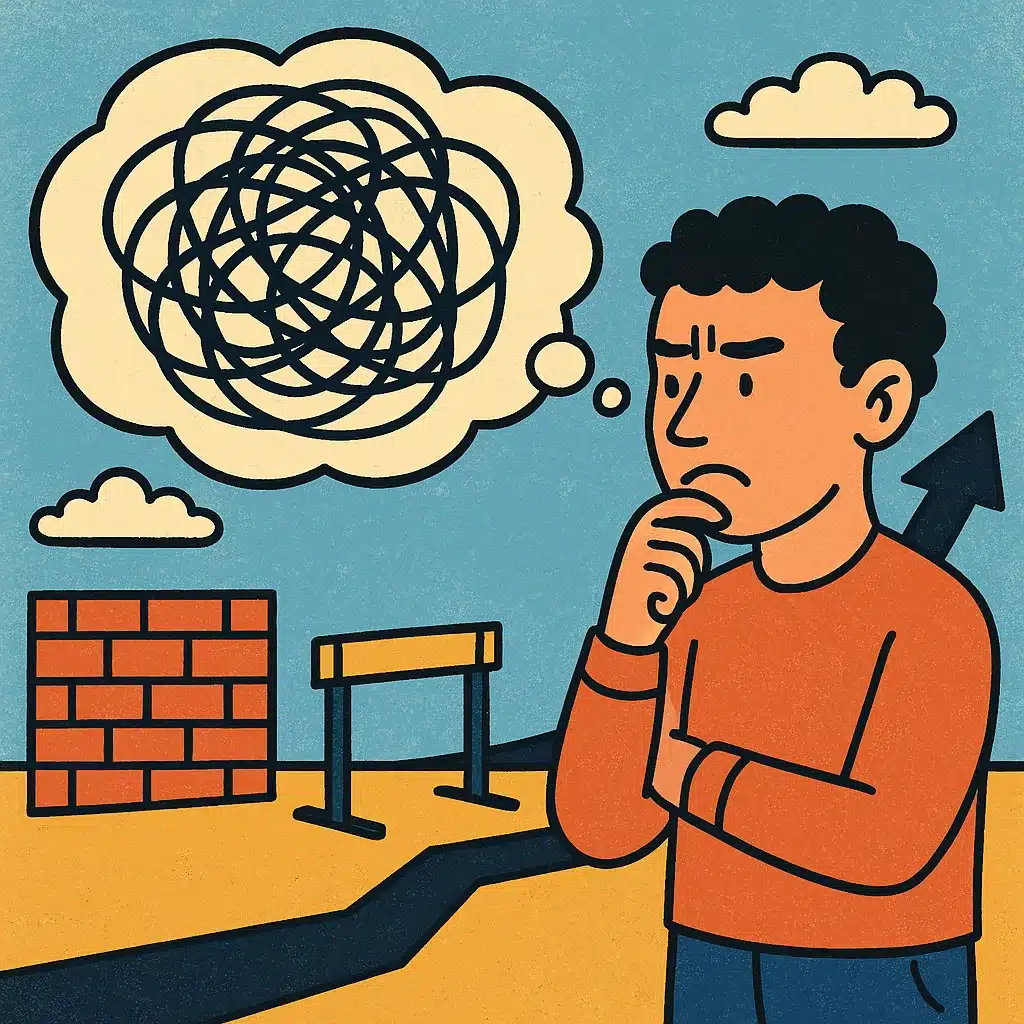Have you ever wondered if the way you think—analytically, visually, or intuitively—might be limiting your potential? The idea of your thinking style holding you back is key here, and we’ll explore it further. Each thinking style has strengths, but over-relying on one can create blind spots. Analytical thinkers may excel at logic but miss creative solutions. Visual thinkers might struggle to organize their ideas, while intuitive thinkers could overlook critical details. By understanding how your thinking style shapes your decisions, you can identify ways to overcome its limitations and unlock new possibilities. We’ll keep revisiting this theme to help you grow.

Why Your Thinking Style Holding You Back May Be Real
Our cognitive styles—rational, experiential, intuitive, and analytical—shape how we process information, solve problems, and approach challenges. Research identifies key styles like Actively Open-Minded Thinking, Close-Minded Thinking, Preference for Intuitive Thinking, and Systematic Analytical Thinking. Each has strengths: open-mindedness fosters adaptability, close-mindedness offers clarity, intuition drives quick decisions, and analytical thinking ensures precision. However, if your default style clashes with your environment’s demands, it can limit your effectiveness. For example, an intuitive thinker in a data-driven role may struggle, while an analytical thinker in a creative field might feel stifled. Recognizing your style’s strengths and weaknesses is key. By cultivating flexibility—such as practicing open-mindedness or using analytical tools—you can adapt to diverse contexts, make better decisions, and unlock your potential. Cognitive styles aren’t fixed; with self-awareness and practice, you can refine them to better align with your goals.
Emerging Trend: Actively Open‑Minded Thinking Matters More Than Ever
A recent study introduces a refined “four-component” model of thinking styles, emphasizing actively open-minded thinking (AOT) as crucial for navigating complexity and uncertainty. AOT involves embracing diverse perspectives, questioning assumptions, and adapting to new evidence. In 2025’s volatile world, marked by rapid technological and societal shifts, rigid thinking patterns hinder innovation and adaptability. Those who practice AOT are better equipped to tackle challenges, make informed decisions, and foster creative solutions. As collaboration becomes key to addressing global issues, AOT’s ability to reduce bias and encourage flexibility makes it a vital skill for success.
How Unhelpful Thinking Styles Limit Growth
Cognitive Distortions: The Tunnel-Vision Trap
Psychologists identify patterns like “mental filtering” and “jumping to conclusions” as unhelpful thinking styles. They narrow your view: focusing only on negatives, omitting positives, or prematurely concluding outcomes. If left unchecked, these distortions suppress creativity and resilience.
Creativity & Adaptability Drain
A study of college students revealed that rigid thinking styles negatively impacted creativity and psychological adaptation. That means if you consistently rely on one mode—say, analytical over experiential—you may leave creativity on the table.
Trends Reducing Limitation: Neurodiversity & Cognitive Inclusion
Neuroinclusion is gaining momentum in workplaces, embracing cognitive diversity—such as autism, ADHD, and dyslexia—as a key asset. In 2025, organizations valuing different thinking and working styles are seeing enhanced innovation and resilience in navigating complex challenges. Unlike traditional models that favored uniform thinking, neuroinclusive practices, like flexible work arrangements and strengths-based roles, are boosting team performance and career mobility. Companies like Microsoft and SAP, with neurodiversity hiring programs, report gains in creativity and productivity. This shift not only unlocks unique perspectives but also redefines workplace inclusion, fostering environments where every mind thrives.
Strategies to Break Free If Your Thinking Style Is Holding You Back
1. Identify your dominant style
Use models like the Cognitive Quad, which treats styles as spectrums that vary by context and over time. Reflect: Do you rely on intuition? Logical analysis? Visual imagination?
2. Try Cognitive Behavior Tools (CBT)
CBT aims to restructure unhelpful thoughts. It’s been shown to alter patterns like catastrophizing or black-and-white thinking by targeting and reframing them.
3. Practice metacognition
“Thinking about thinking” (metacognition) allows you to monitor, evaluate, and adjust your cognitive style in real time. It works like a mental check-in—recognizing when you’re stuck in a filter or assumption.
4. Cross-train thinking styles
Deliberately expose yourself to tasks in different domains—solve puzzles visually, write reflectively, brainstorm collaboratively. That helps build flexible adaptation, akin to transitioning to postformal thought, which embraces multiple logics and perspectives.
Real‑World Examples: Where Thinking Styles Shape Outcomes
Business Leadership
Leaders relying on narrow, analytic thinking often miss emerging trends or team insights, focusing solely on data. In contrast, those with open-minded, experiential approaches—blending intuition and feedback—adapt quickly. For example, a CEO using diverse inputs might spot an AI trend early, outpacing competitors in dynamic markets.
Learning and Education
Embodied cognition is reshaping education by integrating movement into lessons. Math students using gestures to visualize geometry or science students acting out molecular interactions retain concepts better. These varied thinking styles, from visual to kinesthetic, boost understanding and engagement across subjects.
Creativity and Innovation
Pessimistic thinkers often plan inconsistently, focusing on risks, which can hinder collaboration. Optimistic thinkers, however, create clear, unified visions of the future, easing teamwork. For instance, an optimistic designer’s cohesive product vision aligns teams effectively, driving innovation in companies like Tesla.
Summary: Upgrade Your Thinking Style, Unlock Potential
- Recognize if your default thinking style is mismatched to your goals.
- Use validated tools—like actively open‑minded thinking scales—to assess flexibility.
- Challenge unhelpful thinking patterns via CBT and metacognitive practices.
- Practice thinking across modalities—analytic, experiential, embodied.
- Embrace neurodiversity and cognitive inclusion in teams to extend your reach.
When thinking style holding you back, it’s not irreversible. Emerging research and workplace trends confirm that shifting how you think—into a more open, adaptable, and embodied mindset—can unlock untapped creativity, improve decision‑making, and position you to thrive.
References
- Sternberg, R. J. (2022). The Pattern of Executive Professionals’ Thinking Styles in Relation to Metacognition. Cogent Psychology. The Candidly
- Kim, M. (2011). The Relationship Between Thinking Style Differences and Career Choices for High‑Achieving Students. Roeper Review, 33(4), 252–262. scholarworks.wm.edu.
- Zhang, L. & Sternberg, R. J. (2021). Thinking Styles and Career Decision‑Making Self‑Efficacy Among University Students. Exceptionality, 29(3), 167–181. sciencedirect.com.






